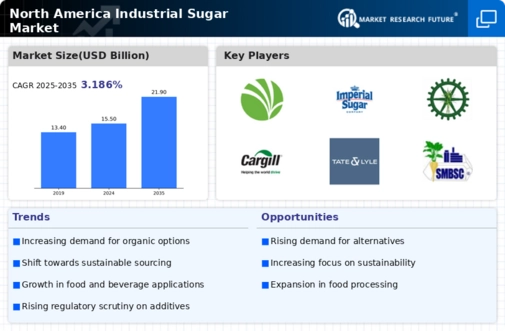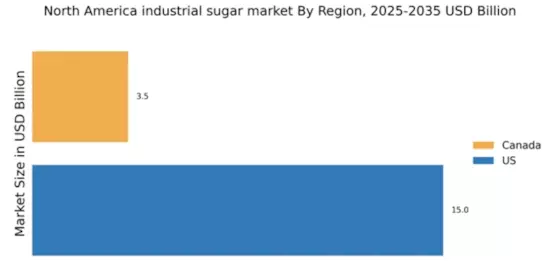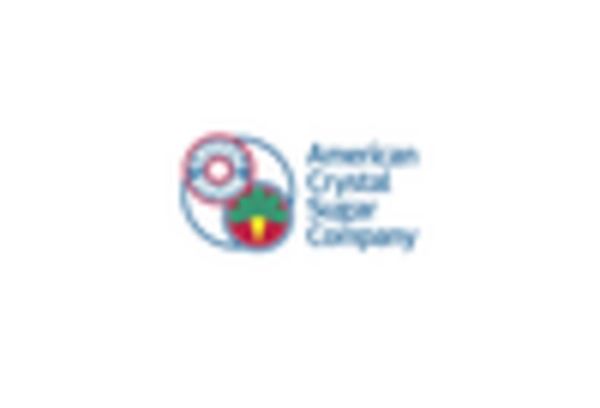Growth of the Beverage Industry
The beverage industry plays a pivotal role in shaping the industrial sugar market in North America. With a projected market value of over $200 billion by 2025, the demand for sugar in soft drinks, energy drinks, and alcoholic beverages remains robust. The trend towards sweeter beverages, coupled with innovative product launches, drives the need for industrial sugar. Furthermore, the rise of craft beverages and specialty drinks, which often utilize sugar for unique flavor profiles, contributes to this growth. As a result, beverage manufacturers are likely to increase their sugar sourcing, thereby influencing the overall industrial sugar market landscape.
Rising Demand for Processed Foods
The industrial sugar market in North America experiences a notable surge in demand due to the increasing consumption of processed foods. As consumers seek convenience, the food and beverage industry adapts by incorporating sugar as a key ingredient in various products. In 2025, the processed food sector is projected to grow at a CAGR of approximately 4.5%, driving the need for industrial sugar. This trend is further fueled by the popularity of ready-to-eat meals and snacks, which often rely on sugar for flavor enhancement and preservation. Consequently, manufacturers are likely to increase their procurement of industrial sugar to meet consumer preferences, thereby impacting market dynamics significantly.
Health Consciousness Among Consumers
The growing health consciousness among consumers is reshaping the industrial sugar market in North America. As individuals become more aware of the health implications of excessive sugar consumption, there is a noticeable shift towards reduced sugar products. This trend is reflected in the increasing demand for sugar alternatives and low-calorie sweeteners. In 2025, it is estimated that the market for sugar substitutes could reach $10 billion, indicating a significant shift in consumer preferences. Consequently, manufacturers in the industrial sugar market may need to adapt their product offerings to align with these changing consumer attitudes, potentially impacting overall sales.
Impact of Trade Policies on Sugar Imports
Trade policies significantly influence the industrial sugar market in North America. Tariffs and import regulations can affect the availability and pricing of sugar, impacting domestic producers and consumers alike. In recent years, changes in trade agreements have led to fluctuations in sugar imports, which can create volatility in the market. For instance, the imposition of tariffs on imported sugar can lead to increased prices for domestic consumers, while also affecting the competitiveness of local producers. As trade policies evolve, their impact on the industrial sugar market will likely continue to be a critical factor for stakeholders.
Technological Advancements in Sugar Production
Technological innovations in sugar production are transforming the industrial sugar market in North America. Advances in extraction and refining processes enhance efficiency and reduce costs, making sugar production more sustainable. For instance, the adoption of precision agriculture techniques allows for better crop yields, which can lead to a more stable supply of sugarcane and sugar beets. In 2025, it is anticipated that these technologies could improve production efficiency by up to 15%, thereby impacting pricing and availability in the industrial sugar market. As producers embrace these advancements, the overall competitiveness of the market is likely to increase.


















Leave a Comment